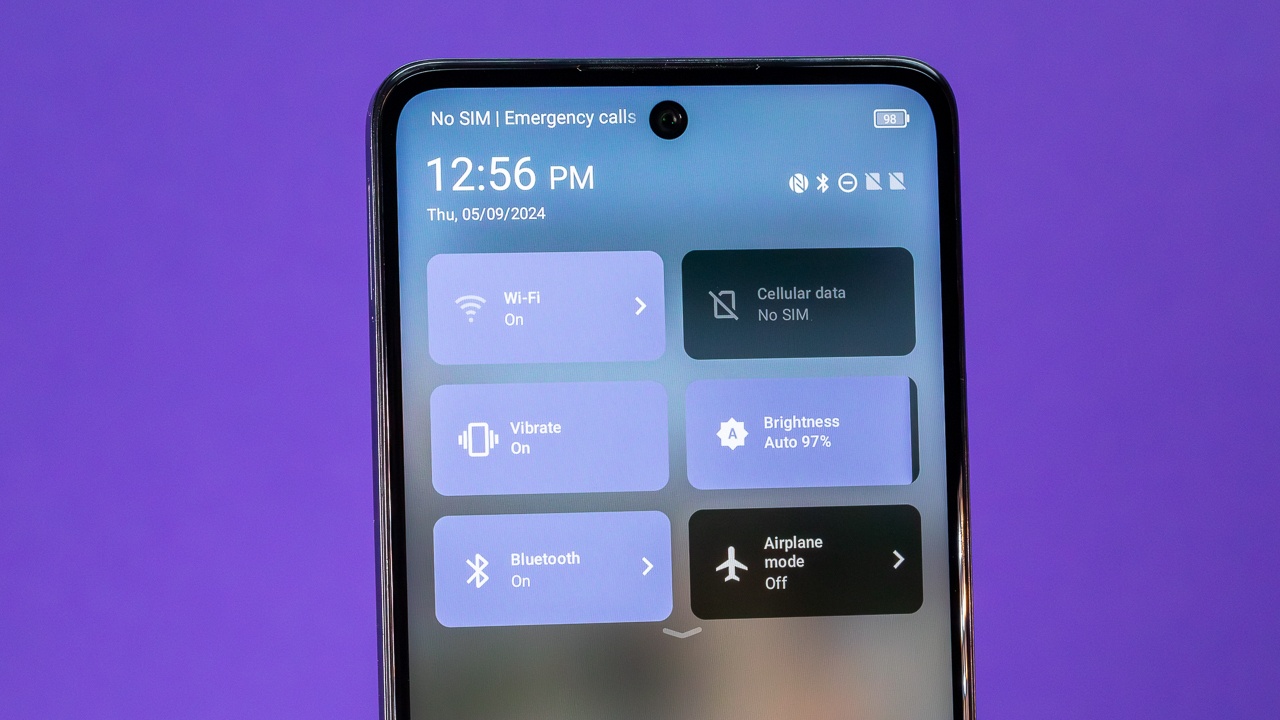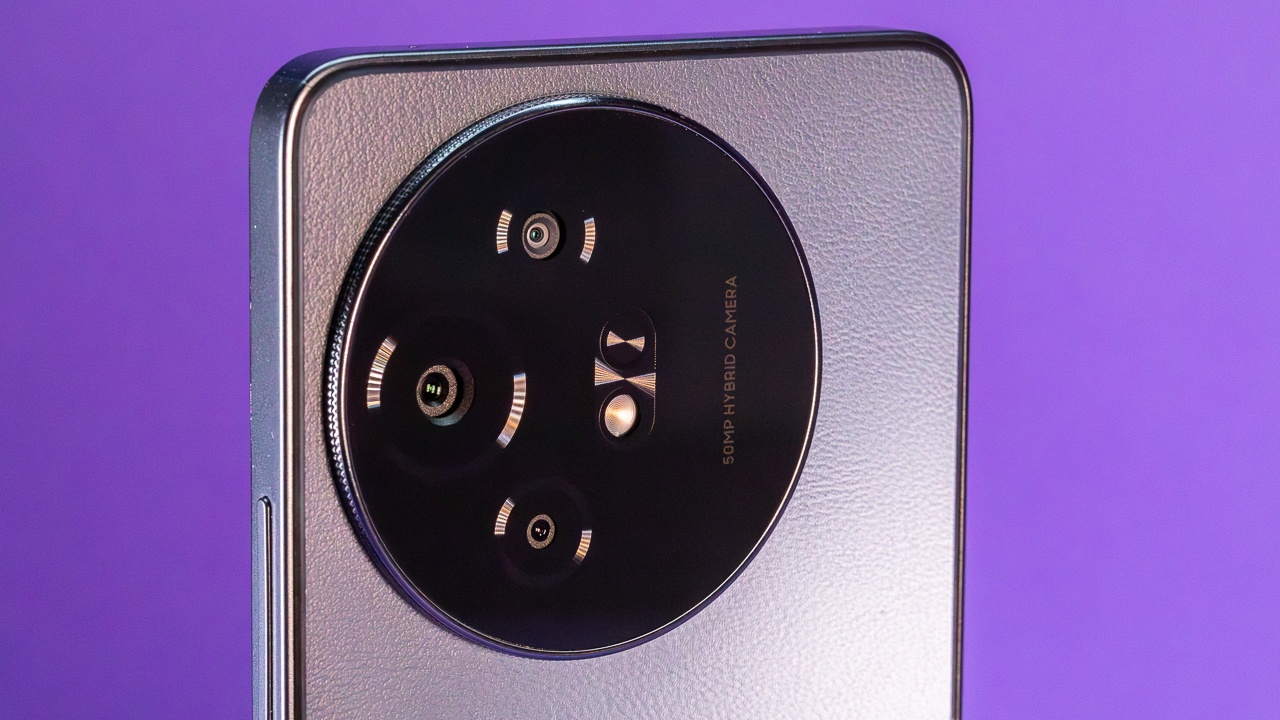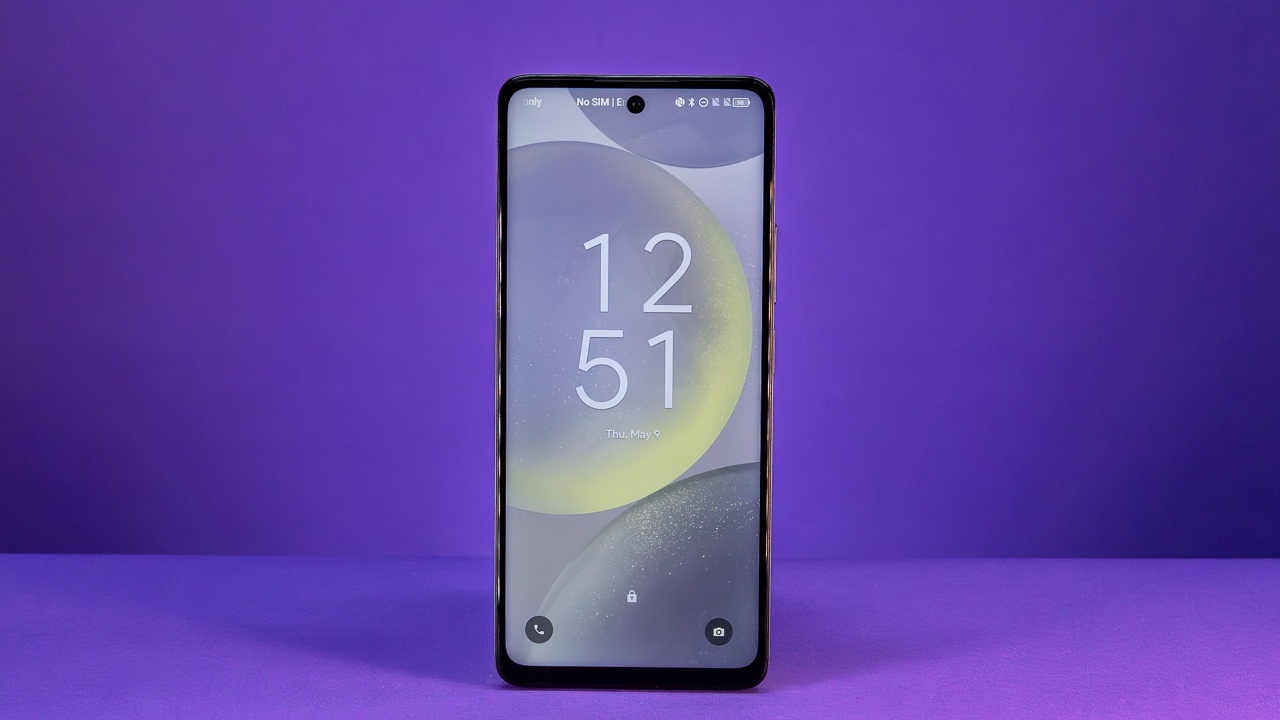-
Pros
- Large screen
- Expandable storage
- 3.5mm headphone jack
- Steady video recording
-
Cons
- Mediocre photo quality
- Short battery life
- Thin-sounding speakers
- Locked to carrier
TCL 50 XL 5G Specs
| Battery Life (As Tested) | 8 hours, 50 minutes |
| Camera Resolution (Rear; Front-Facing) | 50MP, 5MP, 2MP; 8MP |
| CPU | MediaTek Dimensity 6100+ |
| Dimensions | 6.6 by 2.97 by 0.32 inches |
| Operating System | Android 14 |
| Screen Resolution | 2,460 by 1,080 pixels |
| Screen Size | 6.78 |
The $159.99 TCL 50 XL 5G is a budget phone with modern features like a big screen, the latest version of Android, and multiple cameras. It even packs some compelling extras like a microSD card slot, a 3.5mm headphone jack, and a charger in the box. But its cameras often produce soft images with muddy colors, it battery life fails to impress, and TCL promises just one future OS upgrade. If you're in the market for a low-cost phone, you should check out the $199.99 Samsung Galaxy A15 5G instead—it has many of the same capabilities, a longer software support window, and much better cameras, earning it our Editors' Choice award.
Design: Business in the Front, Camera Party in the Back
The TCL 50 XL 5G looks unassuming from the front, with a plastic frame surrounding non-branded glass. A fine texture reminiscent of leather grain accents the plastic rear panel and makes the phone easier to grip. It feels plasticky and light but sturdy. It measures 6.60 by 2.97 by 0.32 inches (HWD) and weighs 6.88 ounces, making it taller and lighter than the Samsung Galaxy A15 5G (6.30 by 3.02 by 0.33, 7.09 ounces).
 (Credit: Joseph Maldonado)
(Credit: Joseph Maldonado)The phone doesn't have an IP rating, so keep it away from dirt and water. Most phones in this price range typically aren't dust and waterproof, though the $149.99 Moto G Play can resist most dust and handle light splashes of water thanks to its IP52 rating.
The bottom features a down-firing speaker, a USB-C 2.0 port, and a 3.5mm headphone jack. On the left side is a combination SIM card and microSD card slot (supporting up to 2TB). I'm always glad to see expandable storage and a traditional headphone jack, no matter the phone's price. The Galaxy A15 also features a 3.5mm headphone jack, though its microSD slot accepts cards of up to 1TB.
The volume rocker and combined power button/fingerprint sensor on the right side are close to the frame, so they have a shallow amount of travel. I found the fingerprint sensor generally worked, though it was finicky at times. Face unlock is also an option, but it's a less secure method for biometric security.
 (Credit: Joseph Maldonado)
(Credit: Joseph Maldonado)TCL goes bold on the back with a large, round camera bump that houses three lenses and an LED flash on the top left. It makes for a striking look, though I don't know that the module needs to be so large given the amount of empty space between the cameras. I had to adjust my grip to avoid touching the circular protrusion when I played games. The circular, front-facing camera is at the top of the display.
 (Credit: Joseph Maldonado)
(Credit: Joseph Maldonado)As for color options, the TCL 50 XL is available only in Slate Gray. Samsung sells the Galaxy A15 in Blue Black or Light Blue, for comparison.
Display: Big, But Dim
A 6.78-inch LCD dominates the front of the TCL 50 XL. It has a resolution of 2,460 by 1,080 pixels, an adaptive refresh rate of 120Hz (up from 90Hz for the previous version), and a maximum brightness of 500 nits. The display is easy to see indoors, though sunlight easily washes it out. Animations and small details look smooth and crisp.
The bezel is uniform around three sides of the screen but thicker along the bottom. Reaching the top of the tall display with one hand was impossible for me, so you might need to use two hands.
For comparison, the Galaxy A15 features a 6.5-inch Super AMOLED display with a resolution of 2,340 by 1,080 pixels and a lower refresh rate of 90Hz, but a maximum brightness of 800 nits. Its OLED screen provides better contrast levels when watching videos, but you won't notice much of a difference when you're simply navigating the interface.
Competitive Performance
TCL powers the phone with a MediaTek Dimensity 6100+ system on a chip (SoC) and 6GB of RAM. As mentioned, you can expand the 128GB of internal storage with a microSD card. Given its price, you shouldn't expect lightning-fast performance from the TCL 50 XL, but it handles basic tasks without issue.
 (Credit: Geekbench/PCMark/GFXBench/PCMag)
(Credit: Geekbench/PCMark/GFXBench/PCMag)On Geekbench 6, a suite of tests that quantifies raw computing power, the TCL 50 XL managed a single-core score of 693 and a multi-core score of 1,864. The Galaxy A15, which uses a MediaTek 6835 SoC, performed similarly with scores of 704 and 1,855. Meanwhile, the Qualcomm Snapdragon 680-powered Moto G Play fared much worse with results of 411 and 1,321.
On the PCMark Work 3.0 test, which evaluates performance on general mobile tasks, the TCL 50 XL scored 8,476. That's in line with the Galaxy A15's score of 8,734 and much better than the Moto G Play's mark of 7,861.
To gauge graphics performance, I ran the GFXBench Aztec Ruins test at a resolution of 2,350 by 1,008 pixels. The TCL 50 XL pushed out 8.7 frames per second (fps). This is about the same as the Galaxy A15 (8.6fps) at a similar resolution of 2,267 by 1,041 pixels.
In terms of real-world gaming, the 50 XL handled the lightweight Alto's Odyssey without any issues. The notoriously resource-intensive Genshin Impact played well on the lowest settings, too. Ramping up to the medium graphics settings and 60fps for a 15-minute session caused the phone to become distinctly warm (though not uncomfortable) near the front-facing camera and the rear camera glass. Still, the rest of the back panel stayed relatively cool. The gameplay struggled to stay at 60fps, with choppy animations. For markedly better gaming performance in this general price range, check out the $299.99 Nuu B30 Pro.
Short Battery Life
The 50 XL comes with a large 5,010mAh battery and supports 18W wired charging but not wireless charging. It lasted an unimpressive 8 hours and 50 minutes in our rundown test, in which we streamed a 1080p video at full brightness over Wi-Fi. For comparison, the Galaxy A15's 5,000mAh cell kept going for an outstanding 14 hours and 3 minutes. Samsung supports charging speeds of up to 25W but also lacks wireless charging.
Charging the 50 XL from 0% to 100% with the included 18W charger took approximately 2 hours and 45 minutes. A 15-minute charge brought the device to 22%, while a 30-minute session got it to 40%. These charging speeds aren't especially fast, but I appreciate that TCL includes a fast charger in the box.
Strong Connections, Muddy Speakers
The 50 XL's 5G and Wi-Fi performance is quite strong. It supports sub-6GHz 5G, including C-band, but not the faster mmWave variety available in some areas. Note that the TCL 50 XL is available at Metro by T-Mobile only—you can't get it unlocked, unlike the Galaxy A15. It supports just one SIM card at a time.
On T-Mobile's 5G UC network in New York City, it reached peak speeds of 544Mbps down and 31.9Mbps up. A Samsung Galaxy S23 FE I tested in the same location got a much slower result of 48.4Mbps down and 34.4Mbps up. A Samsung Galaxy S24 tested in the same location and on the same network reached just 65.2Mbps down but a more respectable 34.4Mbps up.
 (Credit: Iyaz Akhtar)
(Credit: Iyaz Akhtar)For additional wireless connectivity, the phone supports Wi-Fi 5. When I connected it to a Wi-Fi 6 access point, it reached peak speeds of 228Mbps down and 23.0Mbps up. (The slow upload speed is more a function of my internet service provider than the phone). The Galaxy A15 performed similarly with 247Mbps down and 22.8Mbps up. When I took the TCL 50 XL as far away from the access point in my apartment as possible, it hit 178Mbps down and 17.2Mbps up. The Galaxy A15, which also supports Wi-Fi 5, fared a little worse with rates of 136Mbps down and 13.6Mbps up.
Call quality is very good. On a test call, my voice sounded clear, and the phone did a great job of rejecting loud background music. I noticed just a bit more digitization in the wake of background noise, though speech remained clear and easily audible.
The earpiece speaker reached a maximum volume of 77.4dB. It's easy to hear as long as there isn't a lot of surrounding noise. The speakerphone is weak, however, with a maximum volume of 64.4dB. I find that volumes higher than 70dB are necessary in moderately noisy environments.
When I tried playing Metallica's "Enter Sandman" through the 50 XL's speakers, I recorded a maximum volume of 94.2dB. Objectively, this is quite loud, but the music sounds muddy, with thin bass. Deep bass notes like those in The Knife's "Silent Shout" are difficult to hear at all. For better audio quality, use Bluetooth or wired headphones. The phone supports Bluetooth 5.3 and has NFC for mobile payments.
Underwhelming Camera Quality
The 50 XL's 50MP f/1.8 main camera uses pixel-binning to produce 12.5MP images by default, but you can still capture full 50MP pictures if you want. A 5MP f/2.2 ultra-wide imager and a 2MP depth sensor round out the rear camera assembly. An 8MP f/2 selfie camera is on the front. Generally, photos from the 50 XL are fine to share on social media but don't hold up under close examination.

The pixel-binned images from the main camera resolve shadows in a grainy manner. For decent images, you need a lot of light. Outdoor pictures look OK at first glance, but zooming in shows a lack of detail and muted colors. Full 50MP images look much better with natural shadows and better detail. Colors in full-resolution images also look more realistic.

Images from the 5MP ultra-wide cameras don't look good. Colors are splotchy and the entire frame looks hazy compared with those from the main camera.

The 8MP selfie camera isn't as much of a disappointment. It captures detail and colors well, though some grain is still visible in shadows. It sometimes has trouble identifying transparent objects (like my glasses) in portrait mode, though it generally does a good job separating the subject from the background.

Video capture tops out at 1080p and 30 frames per second (fps) on both the rear and front cameras. Footage looks surprisingly steady thanks to the electronic image stabilization. Clips show vibrant (though oversaturated) colors and a good amount of detail.
The Samsung A15 5G produces far better photos, though I give the edge to the TCL in terms of video stabilization.
Helpful Android Customizations
The TCL 50 XL comes with Android 14 and will receive just one OS update and two years of security updates. For comparison, Samsung offers four years of OS updates and five years of security upgrades for the Galaxy A15.
TCL customizes Android with its TCL UI. Visually, this means icons are rounded squares and quick settings options appear as rounded rectangles. Also on board is the TCL NXTVision app, which mainly seems to adjust the saturation of images and video in media apps. The app also features a Reading Mode that claims to make the reading experience resemble that of physical books. You can apply its monochromatic look system-wide or on a per-app basis. Reading news in Feedly with the Reading Mode active did feel easy on my eyes in testing.

Meanwhile, a Smart Manager app lets you quickly free up RAM and otherwise optimize the device performance. For multitasking, TCL gives you the option to place a second app in a pop-over window (Samsung Galaxy devices offer a similar feature). A standard split-screen option is available, too.
The phone includes an FM radio app, though it requires wired headphones to work.
 (Credit: Joseph Maldonado)
(Credit: Joseph Maldonado)Verdict: Fine for the Price, But Better Options Are Available
The TCL 50 XL offers a large screen and plenty of basic features like a microSD card slot and a 3.5mm headphone jack at an affordable price. But its cameras produce poor still images, the screen is somewhat dim, and battery life falls short of competitors. You're better off spending $40 more on the Galaxy A15 5G, which takes better photos, feels more manageable in hand, and is promised many years of software updates, making it our Editors' Choice winner in this price range.


